Global Journal of Infectious Diseases and Clinical Research
COVID 19: Growth analysis, similarity study with HIV and its prevention through flavone rich natural foods
Jayshree Sadhukhan1* and Arijit Pan2
2IDBI Bank, 44, Shakespeare Sarani, Kolkata-700017, W.B, India
Cite this as
Sadhukhan J, Pan A (2020) COVID 19: Growth analysis, similarity study with HIV and its prevention through flavone rich natural foods. Glob J Infect Dis Clin Res 6(1): 003-007. DOI: 10.17352/2455-5363.000026Abbreviations
COVID 19: Coronavirus Disease 2019; WHO: World Health Organization; CoV: Coronavirus; R2 value: Coefficient of Determination Value; HIV: Human Immunodeficiency Virus; DNA: Deoxyribonucleic Acid; RNA: Ribonucleic Acid; 2019-nCoV: 2019 novel Coronavirus; Tat: Transactivator of Transcription; SARS: Severe Acute Respiratory Syndrome, H0: null Hypothesis; H1: Alternate Hypothesis
Introduction
The Coronavirus borne disease COVID 19 has evoked a global crisis which ranges from human health to forecasted economic slowdown in recent times. Originating from China the pandemic has subsequently spread to several developed as well as developing countries including France, Australia, Spain, USA, Germany, Italy, India [1,2]. COVID 19 has taken the life of 62,784 persons while 1,133,758 many people are affected as far as global scenario is concerned as on 05.04.2020 based on the situation report published by World Health Organization (WHO).
Coronavirus (CoV) belongs to a family of positive single-stranded RNA virus that infects animals and humans. Different variants of CoVs that have come to existence till date are like 229E, NL63, OC43, HKU1, MERS, SARS etc. [3,4]. Among the said strands 229E, NL63, OC43 and HKU1 are known to infect only humans while MERS, SARS are known to be transmitted to and among humans from animals. In December 2019, another novel variety of coronavirus named as 2019-nCoV outbroke from Wuhan, China and is known to be transmitted from animals to humans causing significant mortality [2]. The reproductive capacity of 2019-nCoV is found to be more than the earlier SARS coronavirus [1,4]. But the real source of this pandemic, its pathology and pathogenesis, idea of curative vaccines are all seem to be in dark till now.
The transmission pattern of this pandemic outbreak involves direct contact, droplets and airborne routes. From Wuhan, China this disease has rapidly spread over distant nations like France, Australia, Spain, USA, Germany, Italy, India [2,5]. COVID has characteristic clinical symptoms including fever, chills, cough and respiratory troubles. The most prominent pathological findings in this case are shortness of breath and alveolar damage [6]. Apart from the worst affected epithelial cells of respiratory track, mucosal cells of the intestines, tubular epithelial cells of the kidneys, neurons of the brain, and several types of immune cells also get affected during the course of illness [6].
Hence, it is urgent need of the hour to encounter the virus by preventing it from further spread. Since vaccine of the virus is yet to be discovered, it would be the safest way out to prevent the virus through different means from affecting the human body. Therefore, several protective measures have been suggested by the WHO, Governments, NGOs etc. in this regard. Apart from social distancing and self hygiene, exploration of effective antiviral agents that are easily consumable through dietary intake has become essential. Hence, through this paper we have analyzed severity of the growth profile of COVID 19, studied its structure and similarity with HIV and suggested chemically viable dietary solution which can resist the viral reproduction within the host cell.
Materials & methods
Growth analysis of COVID 19
In the present paper, the growth profile of COVID 19 has been analyzed in two segments i.e. one is for India and another is for the World consisting of all affected countries [5,7,8]. For each of the segments, the analysis has been done in terms of two factors viz. i) total COVID 19 positive cases and ii) total COVID 19 death cases.
The data was collected from the situation reports published by World Health Organization (WHO) in its website (www.who.int) from 30.01.2020 i.e. the day on which first confirmed case of a COVID 19 positive was reported in India to 04.04.2020. The data pertaining to India and the World has been tabulated in Table 1 (Spread of COVID 19 cases in India and the World).
Firstly, it was statistically analyzed whether COVID 19 positive and death cases are significantly growing in India. Paired t tests (for two sample means) were done in excel to assess whether the COVID 19 positive and death cases are significantly growing. The null hypothesis (H0) and alternate hypothesis (H1) were designed as follows:
H0: The COVID cases are not significantly growing week by week in India
H1: The COVID cases are significantly growing week by week in India
Considering the fact that the actual corona threat to India is cumulative in nature which urges for disposing of all outstanding cases, the parameter for testing was taken as ‘total confirmed COVID 19 cases’ and not the ‘new COVID 19 cases’ on a particular day. The test period was selected from 01.03.2020 to 04.04.2020 and analyzed in a week wise manner for cases in India and the World. The tests were done with 5% level of significance. The P values obtained in the tests for paired two weeks mean COVID positive and death cases in India are presented in Table 2 (P values of t tests- Paired two weeks mean COVID cases in India).
Similarly, it was statistically analyzed whether COVID positive and death cases are significantly increasing in the world for a test period of 01.03.2020 to 04.04.2020. The null hypothesis (H0) and alternate hypothesis (H1) were as under:
H0: The COVID cases are not significantly growing week by week in the World.
H1: The COVID cases are significantly growing week by week in the World.
The P values obtained in the tests for paired two weeks mean COVID positive and death cases in the World are presented in Table 3 (P values of t tests- Paired two weeks mean COVID cases in the World).
Further, trend analysis was done for assessing the growth pattern of total positive cases in India. The graph (Figure 1) was plotted considering “Number of total COVID 19 positive cases” in the vertical axis and “Corresponding date” in the horizontal axis for analysis of spread of corona positive cases in India. Similarly, the graph was plotted for cases in the World (Figure 2)
The charts (Figure 3 for India and Figure 4 for World) were plotted considering “Number of total COVID 19 positive cases Vs. death cases” in the vertical axis and “Corresponding date” in the horizontal axis.
Prevention through diet
Through literature survey and virtual screening from a set of available group of organic compounds, we have recommended one class of compounds as anti viral agent for 2019-nCoV and suggested its natural sources in fruits and vegetables.
Results and Discussions
In case of India, since all the P values are much lesser than the level of significance (i.e. 0.05) for positive cases, it can be concluded that the COVID 19 positive cases are significantly growing week by week during test period (i.e. H1 accepted). In the same line, it can concluded from the P values of death cases in India that COVID death cases are significantly growing week by week (i.e. H1 accepted) except for 1st to 2nd week wherein H0 is accepted.
Similarly in case of the World, since all the P values are much lesser than the level of significance (i.e. 0.05) for positive as well as death cases, it can be concluded that the COVID 19 positive and death cases are significantly growing week by week during test period (i.e. H1 accepted).
Further from the graph plotted for cases in India, it was found that there is an exponential growth in the number of total COVID 19 positive cases day to day. The excel trend analysis was done and the coefficient of determination (R2 value) was found to be 0.957 for the exponential curve. Hence, 95.7% of the data pertaining to the number of total COVID 19 positive cases in India fit the regression model. The trend was also forecasted for the upcoming days, which is observed to continue in the similar exponential trend. Similarly, from the graph plotted for cases in the World, exponential trend was found and the coefficient of determination (R2 value) was observed to be 0.939. In the upcoming days, the trend was also forecasted to continue in the similar exponential trend.
Hence, it is obvious that the positive cases of COVID 19 are growing exponentially day to day in India and in the World during the test period and it is the urgent need of the hour to prevent the 2019-nCoV from further spread. The human to human transfer (community transfer) of the contagious virus should be controlled for getting a drop in the exponential curve and thereby reverse the pandemic situation.
Coronaviruses have lipid enveloped virions that measure around 12 nm in diameter. Club-shaped glycoprotein spikes in that lipid envelope have made this virus crownlike in shape. The spike glycoprotein(S) of coronavirus consists of two subunits S1 and S2. These two subunits promote receptor binding and membrane fusion respectively. Hence, these glycoproteins are one of the targets for curative vaccine development. Speculation suggests that 2019-nCoV is a novel variant of Coronavirus that was initially derived from animals but got changed its host specificity towards human [1,2,9]. SARS-CoV and 2019-nCoV both belong to a common β-genus. Viral entry in to the host cell is mediated by a host cell receptor ACE2 (angiotensin -converting enzyme 2). Host susceptibility is primarily governed by the affinity of receptor binding domain of S protein against ACE2 receptor. Since the virus-host interaction is mainly determined by the spike like glycoproteins, comparison of 2019-nCoV glycoprotein sequences have been carried out with other viruses to understand its host specificity. Four new types of insertions in the S protein of 2019-nCoV have been observed when compared to its nearest neighbour SARS-CoV [9-11]. These insertions have been preferably acquired by 2019-nCoV promoting its additional survival capacity and infectious nature. Till date sequence alignment studies of spike proteins find several similarities between gp120 and Gag protein of HIV-I [2,9,11]. In HIV, gp120 is responsible for recognizing the host cell and Gag protein performs host membrane binding and packaging [11]. Therefore the novel corona virus of 2019 can be said as the mutated version of previously reported coronavirus showing host specificity towards human. 3D modeling of protein structure displayed that these unique insertions of 2019-nCoV are present at receptor binding sites and thereby they increased the range of host cells to be infected by these novel viruses [11].
Plant products like fruits and vegetables are the good source of various metabolites that have therapeutic values as anti-viral agents. They can arrest viral proliferation within the host cell either by inhibiting receptor binding and membrane fusion or by modulating intracellular replication, transcription and translation processes of viral genome. The primary purpose of this article is to search for efficient inhibitor of 2019-nCoV that are easily consumable as fruits and vegetables in our day to day life and having no side effects as such. Therefore, we have recommended a group of flavonols and flavonol rich foods to combat COVID-19.
In taxonomical terms it can be said that corona virus belongs to the family coronaviridae and is a class IV virus. Its genetic material, single stranded RNA can act as m-RNA and thereby can replicate itself and synthesize proteins. Therefore, an effective drug target to hinder proliferation of viral genome can be the main protease, 3-chymotrypsin-like protease [3CLpro] and papain-like protease [PLpro] due to their major role in processing the polyproteins, translated from viral RNA. Reports are there identifying polyphenols from Broussonetia papyrifera as coronavirus protease inhibitors [12]. Researchers have shown that among ten isolated compounds papyriflavonol was the most potent inhibitor of PLpro with an IC50 value of 3.7 lM [12]. Cheng-Wen Lin, et al. also reported anti-SARS-CoV 3CLpro effect of Isatis indigotica root-derived compounds and several herb-derived phenolics like aloeemodin, quercetin, hesperetin and naringenin using both cell-free and cell-based cleavage assay [13]. Linlin Zhang, et al. reported X-ray crystallographic structural analysis of native anti-SARS-CoV 3CLpro protease and recommended an α-ketoamide inhibitor as effective protease inhibitor [14,15]. In case of co-crystal ligand, the key interacting residues were identified to be Gly143, Cy145, His 164, Glu166, Gln 189 and Thr 190. By virtual screening from a set of available group of organic compounds, we have identified flavone based compounds as a potential lead anti-viral agents due to its ability of interactions with receptor by H-bonding and Pi-stacking interactions.
Flavones have characteristic 2-phenylchromene-4-one ring structure. Some well-known structurally related flavones are Luteolin (2-(3,4-Dihydroxyphenyl)-5,7-dihydroxy-4-chromenone), myricetin and quercetin (Figure 5). These compounds act as good anti-oxidant and free radical scavenger due to their number and position of hydroxyl groups. From chemical intuition it can be said that among the three mentioned flavonols, Luteolin is the most potent due to its most activated carbonyl functional group. Hence, Luteolin and associated Flavones can be thought of preventive measure of COVID 19. These compounds are mainly found in herbs and sometimes suggested as dietary supplements. Luteolin is not so toxic and it has the ability to cross blood brain barrier and capacity to suppress neuroinflammation.
In order to boost up human immunity against COVID 19, the nature-derived flavonols can be consumed through dietary intake as preventive measures. Luteolin is found in celery, artichoke leaves, parsley, peppers, olive oil, rosemary, thyme, peppermint, sage and lemons. All types of red, green and purple-pigmented plants generally contain Quercetin. Some good sources of this flavonol are- Apples, Red wine, peppers, blueberries, blackberries, tomatoes, spinach, cruciferous veggies including cabbage, broccoli and sprouts, citrus fruits, cranberries, asparagus, raw red onion, olive oil, beans and even green tea. Another related flavonol, Myricetin has been found in plenty in dock, cranberry, sweet potato leaves, beans, chilli green, blueberry, lemon, blackberry, spinach, garlic, letus root, cabbage, red wine, broccoli, mango, cherry etc. By consuming these flavonoids abundant fruits and vegetables in regular diet the human immunity can be boosted up to fight against COVID 19.
Conclusion
It is observed from the growth trend of COVID 19 in India and the World that the disease is exponentially growing in recent times. We all are passing through a testing time wherein our precautionary measures play a vital role to combat the corona battle. Apart from social distancing and self hygiene, we can include more flavone rich fruits and vegetables in our regular diet which will help in boosting up our immunity against 2019-nCoV. Since the vaccine of COVID 19 is yet to be discovered, prevention is the best tool we have to fight the pandemic and downturn the dangerous growth trend of COVID 19.
- Liu Y, Gayle AA, Smith AW, Rocklov J (2020) The reproductive number of COVID 19 is higher compared to SARS coronavirus. J Travel Med. 27:1-4. Link: https://bit.ly/2zClw9D
- Chinese Center for Disease Control and Prevention, Beijing 102206, China (2020) The epidemiological characteristics of an outbreak of 2019 novel coronavirus diseases (COVID-19) in China. Zhonghua Liu Xing Bing Xue Za Zhi. 17: 145-151. Link: https://bit.ly/2YcQ0co
- Hoek LVD, Pyrc K, Jebbink MF, Vermeulen-Oost W, Berkhout RJM, et al. (2004) Identification of a new human coronavirus. Nature Medicine. 10: 368-373. Link: https://go.nature.com/3cRbn7h
- Holmes KV (2003) SARS-Associated Coronavirus. N Engl J Med 348: 1948-1951. Link: https://bit.ly/3cWepXI
- Remuzzi A, Remuzzi G (2020) COVID 19 and Italy: What next?. The Lancet. 395: 1225-1228. Link: https://bit.ly/2zuEyP0
- Gu J, Korteweg C (2007) Pathology and Pathogenesis of Severe Acute Respiratory Syndrome. The American Journal of Pathology. 170: 1136-1147. Link: https://bit.ly/2Y9Q1hm
- Diermanse FLM, Kwadijk JCJ, Beckers JVL, Crebas JI (2010) Statistical trend analysis of annual maximum discharges of the Rhine and Meuse rivers. BHS third international symposium, New Castle.1-5. Link: https://bit.ly/2W4bo0T
- Adbel-Moneim AS, Afifi MA, EI-Kady MF (2012) Isolation and Mutation trend analysis of influenza A virus subtype H9N2 in Egypt. Virol J. 173:1-9. Link: https://bit.ly/3bLlme9
- Mehla R, Mehla SB, Chauhan A (2011) A Flavonoid, Luteolin, Cripples HIV-1 by Abrogation of Tat Function. PLoS ONE. 6:e27915 Link: https://bit.ly/2y4ELrX
- Lai CC, Shih TP, Ko WC, Tang HJ, Hsueh PR (2020) Severe acute respiratory syndrome coronavirus 2 (SARS-CoV-2) and coronavirus disease-2019 (COVID-19): The epidemic and the challenges. Int J Antimicrob Ag 55: 105924. Link: https://bit.ly/2YayzJv
- Zhang C, Zheng W, Huang X, Bell EW, Zhou X, et al. (2020) Protein Structure and Sequence Reanalysis of 2019-nCoV Genome Refutes Snakes as Its Intermediate Host and the Unique Similarity between Its Spike Protein Insertions and HIV‑1. J Proteome Res 19: 1351-1360. Link: https://bit.ly/2YdCvsT
- Park JY, Yuk HJ, Ryu HW, Lim SH, Kim KS, et al. (2017) Evaluation of polyphenols from Broussonetia papyrifera as coronavirus protease inhibitors. J Enzyme Inhib Med Chem 32: 504-512. Link: https://bit.ly/3bMIHwe
- Lin CW, Tsai FJ, Tsai CH, Lai CC, Wan L, et al. (2005) Anti-SARS coronavirus 3C-like protease effects of Isatis indigotica root and plant-derived phenolic compounds. Elsevier 68: 36-42. Link: https://bit.ly/2xeTJuZ
- Zhang L, Lin D, Sun X, Curth U, Drosten C, et al. (2020) Crystal structure of SARS-CoV-2 main protease provides a basis for design of improved α-ketoamide inhibitors. Science 368: 409-412. Link: https://bit.ly/2y4FqcV
- Yi L, Li Z, Yuan K, Qu X, Chen J, et al. (2004) Small molecules blocking the entry of severe acute respiratory syndrome coronavirus into host cells. J Virol 78: 11334-11339. Link: https://bit.ly/2VLzwGN
Article Alerts
Subscribe to our articles alerts and stay tuned.
 This work is licensed under a Creative Commons Attribution 4.0 International License.
This work is licensed under a Creative Commons Attribution 4.0 International License.
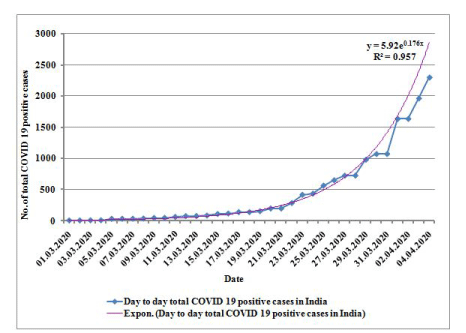
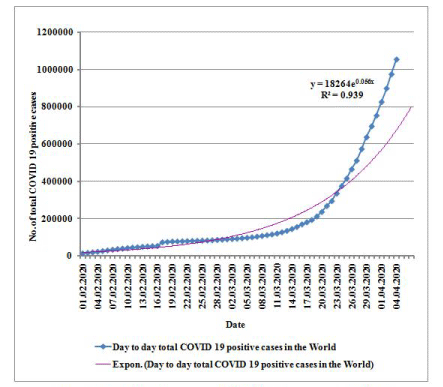
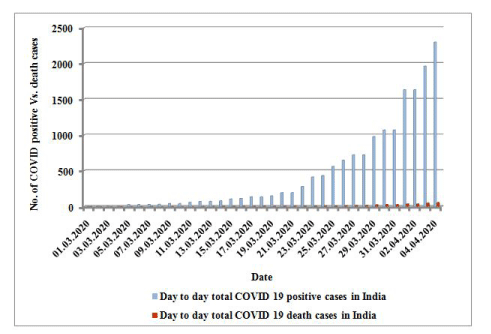

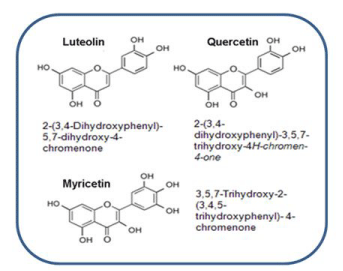
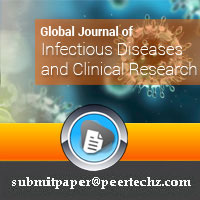
 Save to Mendeley
Save to Mendeley
